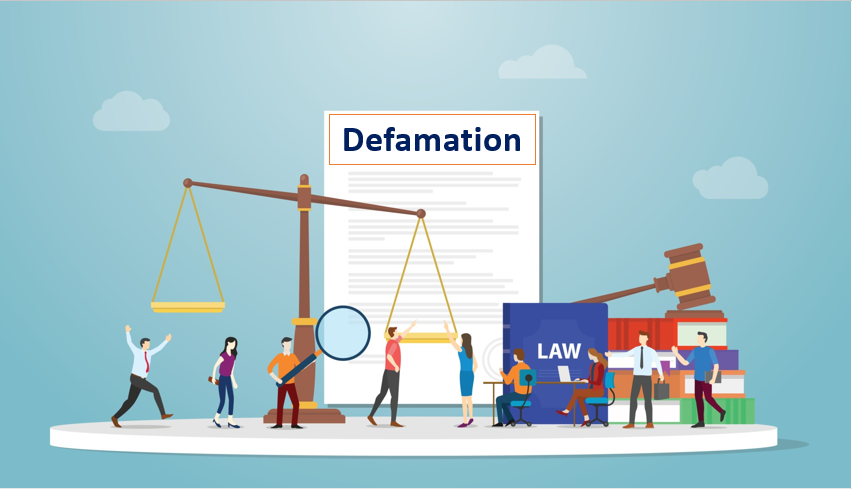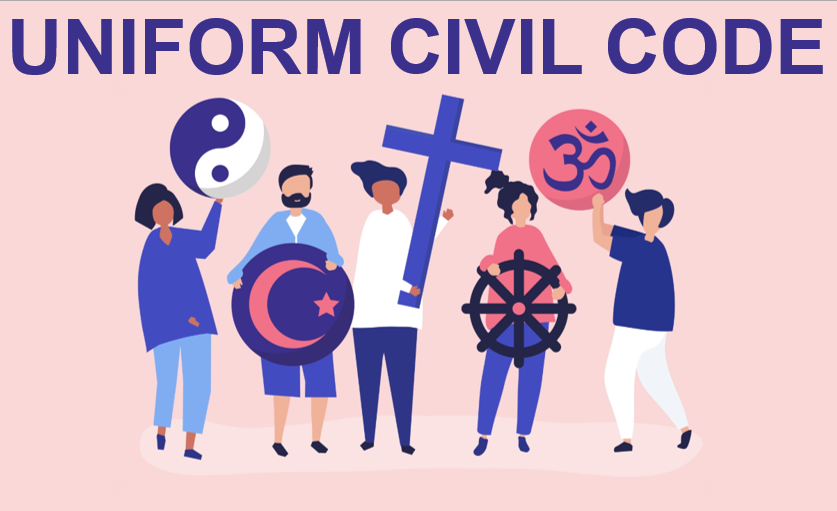Published On: 7th June, 2024

Authored By: Anish Kumar
Presidency University, Bangalore
Introduction:
The integration of Artificial Intelligence (AI) and automation technologies into the modern workforce represents a pivotal juncture in the evolution of labor dynamics. From streamlining production processes to enhancing decision-making capabilities, these technologies have revolutionized industries across the globe and fundamentally altered the nature of work and the skills required to thrive in the digital age. As AI and automation continue to penetrate various sectors, it becomes increasingly imperative to navigate the intricacies of labor law implications in this transformative shift.
In recent years AI automation has transitioned from the realms of science fiction to tangible realities reshaping the fabric of our economy. From robotics and machine learning algorithms to advanced data analytics and natural language processing, these technologies have proliferated across industries and catalyzed unprecedented levels of productivity and innovation. In manufacturing, robots are replacing manual labor in assembly lines, while in finance, AI algorithms are optimizing inventive strategies. More and more customer services and chatbots powered by AI are providing real-time assistance to consumers. This increasing integration of AI and automation signifies not just a shift in how work is performed but also a fundamental redefining of job roles and organizational structures.
Importance of Understanding the Lеgal Implications for Both Employers and Employees:
Amidst the proliferation of AI and automation in the workplace understanding the lеgal implications is paramount for both employers and employees. For employers navigating the lеgal landscape ensures compliance with regulations governing labor practices data privacy discrimination and workplace safety. Failure to address these legal considerations may result in costly litigation, regulatory penalties, and reputational damage. Additionally, for employees and awareness of their rights and protections, labor law safeguards against potential employment and discrimination, and provides information on privacy rights in an increasingly automated work environment. As such fostering a nuanced understanding of the legal implications of AI and automation fosters a more equitable and harmonious relationship between employers and employees, ultimately contributing to a fair and inclusive workplace culture.
In essence, navigating labor law in the age of artificial intelligence and automation requires a proactive approach that acknowledges the transformative power of these technologies while upholding the rights and protections afforded to workers. This article endeavors to explore the complex interplay between AI and automation and labor law and shed light on the legal challenges and opportunities inherent in this rapidly evolving landscape. By fostering a deeper understanding of the legal implications and standards, effectively navigate the complexities of the modern workplace and promote innovation productivity, and equitable treatment for all. The integration of Artificial Intelligence (AI) and automation technology has brought about a seismic shift in the landscape of job roles in the labor market and ushered in both opportunities and challenges for workers and employers alike.[1]
Discussion on How AI and Automation Have Reshaped Job Roles and Created New Categories:
The advent of AI and automation has led to a profound restructuring of job roles across various industries. Tasks that were previously performed exclusively by humans are now increasingly being automated, leading to the creation of new categories of work and the evolution of existing ones. For example, in manufacturing and traditional manufacturing, jobs are being replaced by robotic automation, while in health care and AI-driven diagnostic tools, they are assuming the roles of medical professionals. Moreover, and the rise of AI-powered platforms has facilitated the employment of new job categories, such as data scientists, AI trainers, and robotics engineers, and reinforced the growing demand for skilled skills in the digital economy.
Analysis of the Effects on Job Displacement and Unemployment Rates and Skill Requirements:
While AI and automation have unlocked unprecedented levels of productivity efficiency they have also raised concerns about job displacement and unemployment. As tasks become automated and maintain job roles, they may become redundant and lead to layoffs and workforce restructuring. This phenomenon has the potential to eradicate existing inequalities, particularly for workers in low-skilled and routine-based occupations. Moreover, the impact of AI and automation on unemployment rates is a subject of ongoing debate, with some economists predicting a net loss of jobs, while others expect a transformation in the nature of work rather than outright job losses.
Furthermore, and the integration of AI and automation has profound implications for skill requirements in the labor market. Routine tasks become automated, and there is a growing demand for workers with advanced technical skills such as programming, data analysis, and machine learning. Additionally, soft skills such as critical thinking, creativity, and adaptability are becoming increasingly valued as AI complements human capabilities rather than replacing them explicitly. However, bridging the skills gap remains a formidable challenge, particularly for workers displaced by automation who may lack the necessary training and education to transition into new roles.[2]
Overview of Existing Labor Laws and Regulations and Their Applicability to AI and Automation in the Workplace:
The integration of Artificial Intelligence (AI) and automation technologies into the workplace introduces a myriad of lеgal implications that require careful consideration and proactive management by employers and policymakers.
Existing labor laws and regulations serve as the foundation for governing employment practices and ensuring the rights and protections of workers. However, the rapid advancement of AI and automation poses unique challenges in applying these laws to emerging technologies. While many labor laws were enacted before the widespread adoption of AI and automation, they still provide a framework for additional issues such as wages, work hours, and occupational health and safety. Additionally, specific regulations may govern the use of AI and automation in certain industries, such as healthcare and transportation, where safety and reliability are paramount. Nevertheless, and gaps may exist in current regulatory frameworks and regulations updates and revisions to add to the novel complications introduced by AI-driven automation.
The integration of AI and automation in the workplace raises a host of lеgal issues spanning various aspects of employment law:
Employee Rights: AI and automation may impact traditional notions of employee rights including the right to fair treatment equal opportunities and collective bargaining. As algorithms increasingly influence decision-making processes such as hiring and promotion, performance evaluation and questions arise regarding transparency and accountability and the potential for bias or discrimination.
Workplace Safety: Ensuring the safety of workers in AI-enabled environments is paramount to prevent accidents and injury. Employers have a legal obligation to provide a safe work environment, which includes the associated risks associated with AI and automation technologies. Additionally, regulations may require training programs and safety protocols tailored to the use of these technologies.
Discrimination: The use of AI in recruitment employee evaluation and decision-making processes introduces the risk of algorithmic bias and discrimination. Legal frameworks such as anti-discrimination laws and equal employment opportunity regulations must be adapted to address potential biases inherent in AI algorithms and ensure fair treatment for all employees.
Privacy Concerns: AI and automation often involve the collection and analysis of vast amounts of data and raising concerns about employee privacy rights. Employers must navigate legal requirements regarding data protection, confidentiality, and transparency in AI-driving processes, particularly in sensitive areas such as employee monitoring and surveillance.
In navigating these lеgal issues employers must strike a delicate balance between leveraging the benefits of AI and automation while safeguarding the rights and well-being of their workforce. Proactive measures such as conducting impact assessments implementing transparency measures and engaging with relevant stakeholders can help mitigate legal risks and foster a compliant and ethical work environment. Additionally, policymakers play a crucial role in adapting labor laws and regulations to address the evolving challenges posed by AI and automation and ensuring that legal frameworks remain adaptable and responsive to technological advances.
Regulation of AI-driven decision-making:[3]
The proliferation of Artificial Intelligence (AI) in decision-making processes particularly in hiring promotion and termination practices presents significant regulatory challenges that require careful consideration and adaptation of existing lеgal frameworks.
AI-driven decision-making processes introduce unique complexities a challenge in the realm of labor law regulation. Traditional legal principles in government employee practices may not fully explain the intricacies of AI algorithms, and their implications for fairness, transparency, and accountability. Challenges in regulating AI-driven decision-making include:
Algorithmic Bias: AI algorithms may inadvertently perpetuate biases present in training data leading to discriminatory outcomes in hiring and promotion and a termination decision. Regulating algorithmic bias requires mechanisms for identifying mitigating and a preventing discriminatory effect while ensuring fairness and equal opportunities for all individuals.
Transparency and Explainability: AI algorithms often operate as “black boxes” making it challenging to understand the rationale behind decision outcomes. Lack of transparency raises concerns about accountability and due process rights, particularly in cases of adverse employee actions. Regulating AI decision-making processes necessitates requirements for transparency and explainability to enable individuals to understand and challenge decisions affecting their employee status.
Data Privacy and Security: AI-driven decision-making relies on vast amounts of personal data collected from employees and job applicants. Ensuring compliance with data protection regulations and safeguarding privacy rights is essential to preventing unauthorized access, misuse, or discrimination based on sensitive information. Regulations AI decision-making requires robust data privacy measures and security protocols to protect individuals’ rights and mitigate the risks of data breaches.
Algorithmic accountability refers to the principle that organizations deploying AI systems are responsible for the outcomes and impact of their algorithms. In the context of AI-driven decision-making in the workplace, algorithmic accountability is essential to ensuring fairness, transparency, and ethical conduct. Their expectations of algorithmic accountability include:
Fairness: Algorithmic systems must be designed and implemented to avoid bias and discrimination and ensure equitable treatment for all individuals regardless of protected characteristics such as race gender and or age. Regulatory frameworks should promote fairness by requiring organizations to assess and mitigate biases in AI algorithms and decision-making processes.
Transparency: Organizations deploying AI systems must provide transparency into how algorithms operate a how decisions are made. Transparency measures may include disclosing algorithmic criteria and decision factors and providing data sources to affected individuals. By promoting transparency, regulators can empower individuals to understand and challenge AI-driven decisions regarding their rights and opportunities.
Accountability: Organizations must be held accountable for the outcomes of AI-driven decision-making processes including adverse impacts on individuals’ employment status or opportunities. Regulatory mechanisms for accountability may include requirements for auditing AI systems, establishing oversight mechanisms, and imposing liability for algorithmic errors or discriminatory practices.
Examination of the Role of Government Agencies and Courts and Policymakers in Developing Regulatory Frameworks:[4]
The role of government agencies courts and policy makers in developing regulatory frameworks for AI and automation in the workplace is pivotal in ensuring a balance between fostering innovation and protecting workers’ rights.
Government agencies such as labor departments an regulatory bodies and play a critical role in shaping the lеgal landscape surrounding AI and automation in the workplace. These agencies are responsible for implementing existing labor laws and regulations and ensuring compliance to ensure that employees adhere to legal standards and protect workers’ rights. Additionally, courts play a vital role in adjudicating disputes related to AI-driven employee employment practices and socializing legal practitioners, as well as interpreting the application of existing laws to emerging technologies. Moreover, and policymakers are tasked with crafting legislation and policy frameworks that address the unique challenges posed by AI and automation, including issues of algorithmic bias and privacy, and job displacement.
Balancing the benefits of AI and automation with the protection of workers’ rights requires a multifaceted approach that acknowledges the potential risks and challenges associated with these technologies. Policymakers must consider several key factors:
Proactive Regulation: Government agencies and policy Manufacturers should actively anticipate the impact of AI and automation on the workforce and enact regulations that safeguard workers’ rights, ensure fair treatment, and mitigate potential harm. This may include updating existing labor laws, establishing guidelines for AI-driven decision-making, and implementing mechanisms for accountability and transparency.
Stakeholder Engagement: Policymakers should engage with a diverse range of stakeholders, including labor unions, advocacy groups, industry associations, and academic organizations, to solicit input, gain insights, and gather concerns regarding AI and automation in the workplace. Collaboration between governments, employees, and workers is essential in developing effective regulatory frameworks that strike a balance between innovation and protection.
Training and Education: Government agencies and policymakers should invest in workforce training and education programs to equip workers with the skills a knowledge necessary to thrive in an AI-enabled economy. This may involve partnerships with educational institutions, vocational training programs, and training initiatives aimed at upskilling workers and facilitating transitions to new roles and industries.
Ethical Guidelines: Policymakers should develop ethical guidelines a principles for the responsible deployment of AI and automation in the workplace. These guidelines should prioritize fairness, transparency, accountability, respect for human dignity, and ensuring that AI technologies enhance and protect rather than undermine workers’ rights and will be.
Conclusion
In navigating the intersection of labor law and AI-driven automation it becomes evident that the integration of Artificial Intelligence (AI) and automation technology into the workforce presents both opportunities and challenges for employers employees and policymakers alike. The increasing integration of AI and automation in the workforce has led to a fundamental reshaping of job roles the creation of new categories of work and the evolution of traditional employment practices.
Understanding the lеgal implications of AI-driven automation is crucial for both employers an employ and as it encompasses a wide range of issues including employee rights workplace safety discrimination and privacy concerns. Regulatory challenges exist in effectively regulating AI-driven decision-making processes, particularly in areas such as hiring promotion and termination practices. Addressing algorithmic bias, promoting transparency, and ensuring accountability are essential in fostering fair and equitable employment practices.
The concept of algorithmic accountability is paramount in ensuring fairness and transparency in AI-driven decision-making. By holding organizations accountable for the outcomes and impacts of their algorithms and standards, they can mitigate the risks of bias and discrimination and provide advice on individuals’ rights and opportunities.
Considering these insights there is a clear call to action for stakeholders to proactively address lеgal challenges and promote responsible AI deployment in the workplace. Employers must adopt ethical AI practices ensure compliance with labor laws and regulations and prioritize transparency and fairness in AI-driven decision-making. Additionally, policymakers play a crucial role in updating and adapting regulatory frameworks to accelerate the evolution of AI and automation in the workforce.
By working collaboratively to navigate the lеgal landscape of AI-driven automation stakeholders can harness the transformative potential of these technologies while safeguarding the rights dignity and wellbeing of workers. Through responsive AI deployment and proactive engagement with legal and ethical considerations, we can shape a future where technology enhances and is better than undermines the principles of fairness and equality, as well as justice in the workplace.
Reference(s):
[1] https://www.ilo.org/wcmsp5/groups/public/—ed_emp/—emp_policy/documents/publication/wcms_634157.pdf
[2] Frey, C. B., & Osborne, M. A. (2017). The future of employment: How susceptible are jobs to computerization? Technological Forecasting and Social Change, 114, 254-280. (https://www.sciencedirect.com/science/article/pii/S0040162516302244)
[3] DARPA. (2016). Explainable Artificial Intelligence (XAI) Program. (https://www.darpa.mil/program/explainable-artificial-intelligence)
[4] National Institute of Electronics and Information Technology (NEIT) (http://www.nie.gov.in/)



